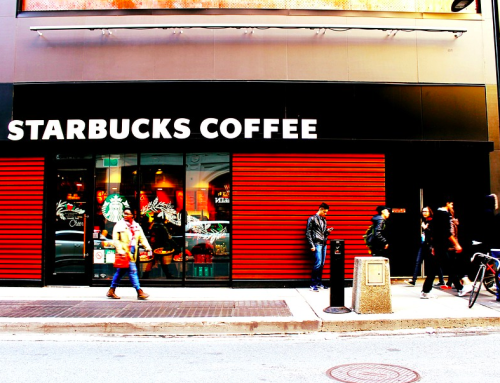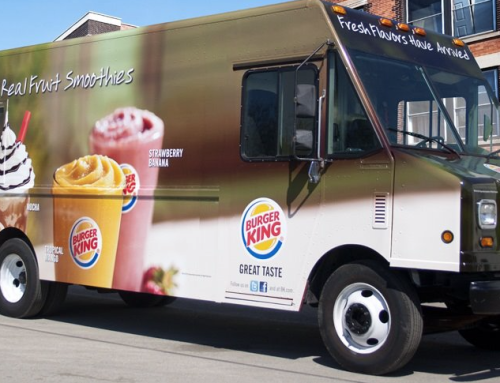Sports drinks have gained popularity among professional athletes and couch potatoes alike. While this type of drink was targeted for athletes to stay hydrated before, during, and after exercise, many ordinary consumers reach for sports drinks to be consumed with their meals. In fact, you can now find Powerade available at the soda machine of many fast-food restaurants, including Wendy’s.
In 2020, the total market size for sports drinks was USD $26.24 billion dollars where a significant growth of 7.7% in consumer size was noted in 2020. The future for sports drinks looks bright as the market is projected to grow through 2028 with an estimated value of USD $36.35 billion.
Powerade is a sports drink produced and marketed by The Coca-Cola Company with Gatorade of Pepsi Cola being its main competitor. According to Euromonitor data from 2020, Gatorade’s share for the US sports drinks category was 72.1% with Powerade lagging at distant second at 16.1%. Powerade’s brand mission is to “champion the power of sports for all.” With that, the brand has continuously developed its product line and flavors since its launch in 1988. Let’s take a look at this brand’s strengths, weaknesses, opportunities, and threats to evaluate the performance of this business so far.
SWOT Analysis Topics:
Powerade SWOT Analysis
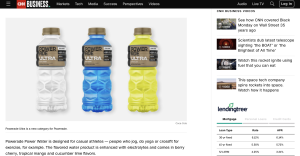
Powerade featured on CNN during a rebranding.
Strengths
Innovation – Innovation has been one of the many strengths of Powerade. From the time of its introduction in 1988, the brand has made several new changes in its product line in an effort to increase market share.
In July 2001, Powerade released a sports drinks formula incorporating vitamins B3, B6, and B12 with the goal of improved energy metabolism. Using a 2000 calorie per day diet, this sports drink contains 10% of one’s daily value of vitamins B3, B6, and B12. These vitamins have different roles in a person’s system: vitamin B3 is for digestion and for converting food into energy, vitamin B6 is for the creation of red blood cells, and vitamin B12 is for red blood cell count maintenance.
In April 2005, Powerade made another innovation with its distinct bottle design with the new 20-oz. sport-grip bottle, making it easier for consumers to hold and grip the drink. This new bottle was met with enthusiasm since it incorporated what the market wanted: a bottle that is easy to grip and open while on the move.
The new bottle’s functionality showed the company’s commitment to putting their consumers’ needs first. It showed that Powerade was determined to be innovative and defy convention. There were also changes made in the way the label were applied to the bottle. Labels that were more tight-fitting were used so as not to allow water to be trapped under the label making the beverage difficult to grip.
Related Reading: YETI SWOT Analysis: The Real (Near Term) Risks for this Cooler Brand
Powerade has developed several flavors from its original ones which were Lemon Lime, Fruit Punch, and Tropical Mango. Fast forward to the present and Powerade has 16 various flavors in the USA that help consumers rehydrate and replenish electrolytes. There also are 6 more flavors of Powerade Zero sold in the USA.
Powerade has an internationally recognized brand and are present in Australia, the United Kingdom, South Korea, Iceland, Germany, and Greece. Powerade’s flavors are tastier and more appealing to consumers compared to its competitors.
In July 2005, Powerade Option was launched. This was marketed to provide customers with a sports drink that is low in calories and carbohydrates. By using a blend of Sucralose, Ace-K, and HFCS, Powerade Option had fewer carbohydrates and 80% less calories than the leading competitor. Powerade Option did not only bank on its functional benefit, but competed with the flavors used in its launch and preferred by the consumer public. These flavors were Strawberry and Black Cherry.
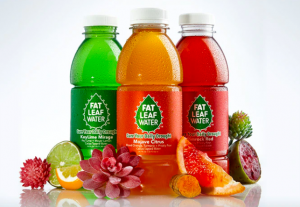
Fat Leaf Water lineup of sports beverages. A competitor to Powerade.
In 2007, Powerade Zero was introduced to the market. This product was sold as a sports drink that contained no carbohydrates, no sugar, and no calories without losing its rehydration benefits.
In March 2016, Powerade launched another new product, the Powerade Ion4. This was marketed to be containing 4 electrolytes – Sodium, Potassium, Calcium, and Magnesium – and was targeted to give one fast hydration and energy while retaining one’s body fluids.
In 2020, Coca-Cola launched two more Powerade beverage lines with updated plastic bottles for a sleeker look: Powerade Ultra for those focused on building strength and Powerade Power Water for casual athletes like those who jog and do yoga. This move was a play to broaden the beverages appeal to a broader range of consumer types.
Sponsorships – Powerade has many sponsorships to its name. It was the official sports drink of the 1988 Olympics, the Australian rugby league team and the Australian union team, NASCAR, FIFA, and many other teams around the world. If there is a major sports league you can think of, Powerade has probably helped sponsor it.
Corporate brand power – Powerade has a strong and credible corporate brand name since Coca-Cola is a global leader in the soft drinks business. If a product is produced by Coca-Cola, it means the beverage has advantages of scalable production and global distribution. This has given Powerade beverage an advantage over would-be competitors in the space.
Weaknesses
High-fructose corn syrup – The amount of sugar in Powerade Option and its leading competitor Gatorade is about equal. However, consumers believe that Powerade tastes sweeter than the said competitor because it uses high-fructose corn syrup, which tastes sweeter than dextrose sugar that’s found in similar drinks.
Unhealthy products – Powerade Ion4 is helpful to athletes who need to replenish their electrolytes, carbohydrates, and vitamins. However, critics say high levels of sodium and sugar in this sports beverage make it detrimental to one’s health, and may not compensate for the advantage given by the drink in replenishing fluid losses and electrolytes lost in sweat.
Related Reading: Dunkin’ Donuts SWOT Analysis: The Hidden Weakness
There’s also the use of artificial colors and sweeteners can lead to an increase in insulin resistance and other health issues like hyperactivity in children. The two sweeteners used in Powerade Zero, Sucralose and Acesulfame Potassium, though FDA approved are cited as reasons some consumers don’t drink the product.
Lacking in promotions – Powerade does not go all out to come up with promotions to let the consuming public know of the brand’s different products. Instead of advertising the salable qualities of its product line, some promotions take an offensive stand against the brand’s major competitor.
Opportunities
More people work out at home – With the pandemic, more people are working out at home which means greater chances of buying and consuming sports drinks. Coca-Cola could come up with new flavors and bottle-design ideas that can make Powerade more attractive than its competitors. They could also create a marketing campaign that directly appeals to the at-home athlete.
Trend to be health-conscious – With the trend to be more health-conscious, natural ingredients have to be incorporated into Powerade. The drink should not only target to rehydrate but also to keep one healthy. To be specific, studies have to be done on how to minimize the amount of sodium and sugar in this sports beverage to give it a more positive image.
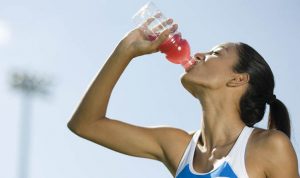
Time to hydrate.
Powerade’s marketing team must work hard to make the product attractive to consumers and make them have product loyalty. The changing consumer preferences must be considered. Advertisements on Powerade’s vitamin inclusion have to be increased to let the general public be aware of this advantage Powerade has over its competitor.
Increase in buying power – Powerade also has to bank on the increased buying power of people nowadays. Since most people work from home, there have been lesser expenditures brought about by expensive dinners in restaurants and staying out all night with friends in bars. Many have more money to spend on products that can contribute to their well-being. People are more than willing to pay for healthier alternatives.
Related Reading: SWOT Analysis for Outback Steakhouse: A Floundering Chain with Hope?
New target market – Millennials are inclined to be more active than previous generations. Individuals with more active lifestyles are the ideal market for Powerade to build a relationship with. Powerade must continue to innovate and pay close attention to market trends to address what Millennials and younger generations desire.
The target market of Powerade has to be reviewed. If initially, the products were produced for active men, professional bodybuilders, and athletes, Coca-Cola must ensure the market of women, younger adults, and youth are considered. Variants of Powerade have to launch for each specific new target market segment just like what they did when they introduced Powerade Power Water and Powerade Ultra.
Market Freezer Bars better – Powerade Freezer Bars have to be advertised well and made available to consumers. This type of product is not common and Powerade has to make the most of it.
Update endorsements – Powerade has to update its endorsement roster to catch consumers’ interest. They should pressure more female endorsers to gain more customers of this gender. I believe this is one of the most overlooked opportunities and current weakness for the company.
New marketing strategies – Marketing strategies to increase sales volumes have to be seriously discussed. Point-of-sale merchandise, for example, could be offered. Surveys and questionnaires should be conducted to understand the needs of the modern sports drink customer.
Also, most of the time the major factor in choosing which product to purchase is taste. Powerade has to continuously make new flavors that can make competitors’ buyers shift their preferences. They can come up with delicious flavors that can entice new buyers while maintain their current consumers / market share.
The company’s product-development group must give it their all in order to ensure Powerade’s future growth and viablility. Research and development will make or break this business in the future.
Threats
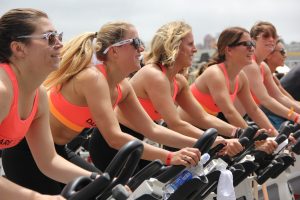
Powerade targets athletes in their marketing campaigns.
Competition – BodyArmor is threatening to steal the market share of two leading brands in the sports drinks business. This product claims to have no artificial sugar or coloring. Without artificial sweeteners or dyes, BodyArmor presents itself as a more premium brand of sports beverage, not to mention the inclusion of coconut water in their drink.
BodyArmor seems to have come up with a solution to this customer segments basic needs: a healthy for you sports drink. BodyArmor’s management is has a bold mission to either “go bankrupt in five years or to be the number one sports drink by 2025”. But it has yet to be seen if consumers will respond.
BodyArmor continues to work on different strategies to inch its way to the top. Here’s the playbook this sports drink brand is using:
- One is to add its zero-calorie drinks.
- Second, it’s continuously trying to get more shelf space at grocery stores and other retailers. Distribution is key in the beverage industry.
- Third, it’s adding more to its roster of athlete-endorsers. These athletes in turn promote the beverage on their social media accounts and traditional advertisements.
- Fourth, the company is targeting a younger consumer. According to research, 27% of all people who consider themselves athletes are ages 20 – 30.
New entrants in the growing sports drinks business also pose a threat to Powerade. You never know when little known drink like cactus water will resonate with consumers.
In the same manner, the threat of energy drinks has to be seriously considered. Energy drinks are also marketed to enhance physical performance aside from increasing one’s energy and enhancing a person’s mental awareness. Their target markets are not only those who are into sports but anyone who needs an energy booster.
Sports drinks are beverages designed for athletes that contain carbohydrates, electrolytes, minerals, and vitamins. Sports drinks are meant to be consumed before, during, or after intense workouts or a competitive event. The main function of sports beverages are to prevent dehydration by stimulating rapid fluid absorption and to replace the electrolytes and other nutrients lost during intense sweating.

